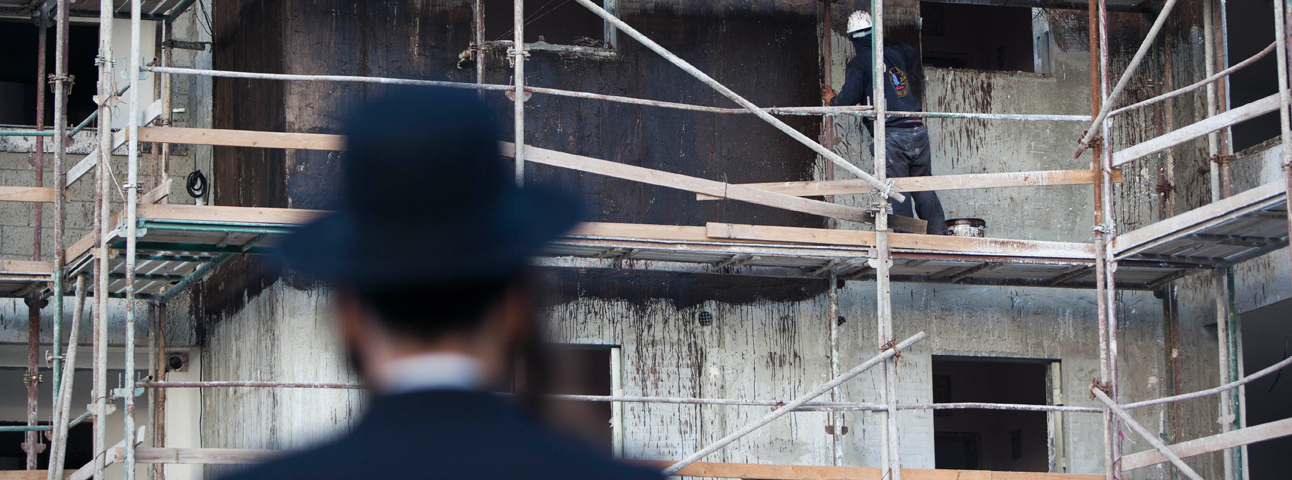The New Housing Plan: A Grand Plan with Fine Print
Subsidizing cheap old apartments in poor towns won't solve the housing shortage for the ultra-Orthodox, but it will destroy those towns' social fabric

Housing Minister Litzman’s new housing plan presents a vision for developing Israel’s geographic periphery by investing in infrastructure, transportation, and employment centers. All these are in and of themselves – important goals. Nevertheless, it is important to read the plan’s fine print as well, and to distinguish between the vision and the reality on the ground, and between the plan’s short and long term implications.
Let's start with the good news. Developing Israel’s geographic periphery (often also referred to as a “social periphery,” since many of its residents belong to Israel’s more disadvantaged groups) and investment in its infrastructure and transportation are worthy objectives and an important national strategic goal. In addition, the decision to establish a new ultra-Orthodox (Haredi) city west of Kiryat Gat, instead of in remote Kasif, is also a good choice, in terms of employment opportunities and transportation – since the northern Negev is relatively close to employment centers, compared to more remote peripheral areas, and provides easier access to transportation. Well aware of this, Minister Litzman is emphasizing the development of infrastructure and transportation in the periphery.
However, these projects take a long time (and lots of bureaucracy) before they actually come into being, and require the simultaneous development of employment opportunities and commercial centers in the target areas. It is foolhardy to encourage young couples to move to the periphery without ensuring that good employment opportunities are available to them. And so, as the Minister of Housing himself noted when presenting the plan to the Finance committee, this vision is a long way off, and it is the next minister who will probably cut the ribbon.
So what does this leave us with in the here and now? The previous Minister’s (Kachlon) "Buyer Fixed Price" program has been shelved – and in its place, subsidies in the amounts of hundreds of thousands of shekels (up to NIS 200,000 according to The Marker) will be allocated to buyers old second-hand apartments located in the periphery whose price does not exceed NIS 700,000.
A new study by the Israel Democracy Institute, which analyzes the ultra-Orthodox housing market, reveals that 30% of all apartment purchases by the ultra-Orthodox over the past decade, are apartments purchased not for immediate occupancy, but rather for investment, and most - for under NIS 700,000. Therefore, we can assume that this benefit is well tailored to the needs of the ultra-Orthodox public, with these investors being its first beneficiaries. It is far from clear how subsidizing investments in old apartments in the periphery will increase supply, but there is no doubt that it will increase demand, and lead to a rise in the prices of these apartments.
For the short term, how will these benefits impact the reality on the ground in peripheral localities? As mentioned, our findings indicate that in many cities in peripheral areas that are not characterized as Haredi --such as Safed, Ofakim, Arad, Tiberias, Kiryat Malachi and Kiryat Gat, much of the housing is Haredi-owned. As the percentage of Haredim in these cities increases, they attract more and more members of the community. As a result, and also motivated by the new subsidies many ultra-Orthodox buyers will choose to move en-masse to these peripheral cities - and will rapidly become a majority in them.
The Minister is well aware of the fact that the current Ministry of Housing plans do not provide the means for constructing even a third of the number of apartments, needed to meet the housing needs of the ultra-Orthodox public in the next two decades. Therefore, the immediate solution he offers is a significant subsidy for the move of the ultra-Orthodox to non-ultra-Orthodox development towns (generally poor localities) in the periphery. As a result, and very quickly - there will be a critical mass of ultra-Orthodox families in these cities; the process will be accelerated, and the cities will completely change their character. What will the non-Haredi residents of these cities do then; where will they go; how will the financial stability of these municipalities be maintained (when from the outset—it is shaky); and what will be the fate of the young couples?
One thing is certain: In order to both ensure that “stronger” populations groups continue to reside in the periphery and in order to encourage the migration of such population groups into these cities, they must be made more attractive – by developing infrastructure, making transportation more accessible, and by establishing centers of quality employment. All this is indeed included in the plan, but it is impossible to put the cart before the horse. Most young couples are interested in living near employment centers that allow them to maximize their earning potential. Subsidizing the purchase of old apartments in the periphery will only lead to inefficient allocation of human capital and deal a blow to the GDP.
It is important to emphasize: The housing problem among the ultra-Orthodox (and among the general public) is real, and the government must act quickly to address it. However, the response to one group’s problem should not exacerbate the problem of another. The solution to the housing crisis of both the ultra-Orthodox and the general public is to cut back on bureaucracy, accelerate construction, and significantly increase the supply of new apartments –both in the periphery and in the center of the country.
The article was published in the Times of Israel.
